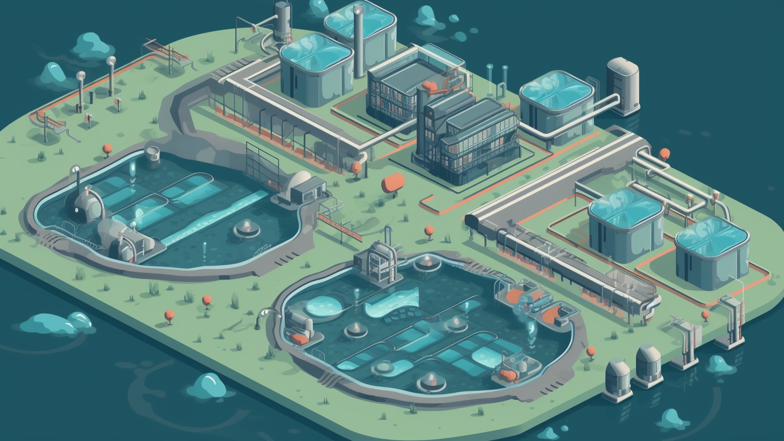
Nanotechnology is a field of science that deals with the design, production, and application of materials and devices at the nanoscale. The nanoscale is a tiny world that exists at dimensions smaller than a human hair. At this scale, properties of materials can be very different from those at the macroscale. The unique properties of nanomaterials enable the development of new technologies for water treatment and pollution control. The potential of nanotechnology to revolutionize the water treatment industry lies in its ability to improve the efficiency and effectiveness of water treatment processes while minimizing the use of chemicals and energy.
One of the major challenges in water treatment is removing contaminants such as viruses, bacteria, and organic compounds. Traditional water treatment processes involve the use of chemicals and physical filters to remove these contaminants. However, these methods can be costly and energy-intensive. Nanotechnology offers a new approach to water treatment by using materials that can selectively remove pollutants without requiring the use of chemicals or energy.
One promising nanomaterial for water treatment is graphene oxide, a thin layer of carbon atoms. Graphene oxide has a high surface area and can act as a barrier to prevent the passage of contaminants while allowing water to flow through. Researchers have developed a variety of graphene oxide-based membranes for water treatment. These membranes have been shown to be effective in removing contaminants such as heavy metals and organic pollutants from water. Graphene oxide-based membranes have the potential to be more cost-effective and energy-efficient than traditional filtration methods.
Another promising application of nanotechnology in water treatment is the use of nanoparticles for disinfection. Silver nanoparticles have been shown to have strong antimicrobial properties and can be used to disinfect water. Researchers have also developed nanoparticles made of iron oxide that can remove arsenic from contaminated water. These nanoparticles work by adsorbing arsenic onto their surface, making it easy to remove from water. Nanoparticles can be used in combination with traditional water treatment methods to enhance their effectiveness.
Nanotechnology can also be used to monitor water quality. Sensors made from nanomaterials can detect contaminants in water at very low concentrations, allowing for early detection of pollution and timely intervention. Researchers have developed nanosensors that can detect bacteria, viruses, heavy metals, and other pollutants in water. These sensors are highly sensitive and can detect contaminants in real-time. The use of nanosensors can improve the efficiency of water treatment processes by enabling early detection of pollution and reducing the risk of contamination.
The development of nanotechnology-based water treatment solutions is not limited to the lab. Several innovative products are already being developed and implemented around the world. For example, WaterFX, a California-based startup, has developed a solar-powered desalination plant that uses nanotechnology to remove salt and other contaminants from seawater. The plant uses mirrors to focus sunlight onto a boiler, which generates steam that is used to distill the seawater. The resulting pure water is then collected and used for irrigation. The use of nanotechnology in the plant's filtration system enables it to operate more efficiently and with less energy than traditional desalination plants.
Another example of a nanotechnology-based product is the SunSpring, a water purifier developed by WaterisLife, a nonprofit organization. The SunSpring uses a combination of nanofiber filtration, activated carbon, and ultraviolet light to filter and disinfect water. The device can treat up to 5,000 liters of water per day and is designed to be used in low-income communities with limited access to clean water.
In conclusion, nanotechnology offers promising solutions to the global water crisis. The unique properties of nanomaterials enable the development of new technologies for water treatment and pollution control that are more efficient, effective, and sustainable than traditional methods. The use of nanotechnology in water treatment can improve the efficiency of water treatment processes while minimizing the use of chemicals and energy. The development of innovative nanotechnology-based water treatment solutions provides hope for a brighter future where clean water is accessible to all.
Comments
Post a Comment